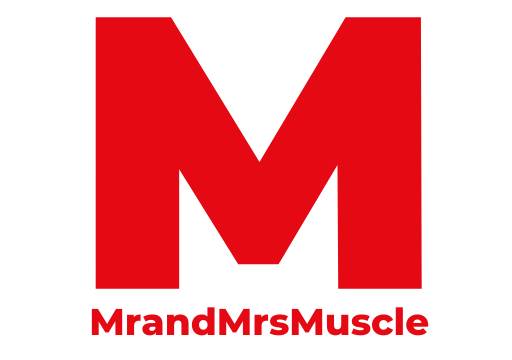When it comes to building muscle, dumbbells vs barbells is a classic debate. While both are excellent tools for building strength and size, there are a few factors to consider when choosing between the two. Dumbbells are smaller, portable and offer a greater range of motion than barbells. This allows you to train anywhere with minimal equipment. On the other hand, barbells can be used to target larger muscle groups more efficiently. To help you decide which one is best for your goals, let’s explore the pros and cons of dumbbells vs barbells.
The benefits of using dumbbells
Enhanced Range of Motion and Stabilizer Muscle Activation
One major advantage of using dumbbells for your workouts is that they allow for a greater range of motion compared to barbells. With dumbbells, each arm works independently, allowing for a more natural and fluid movement during exercises.
Stabilizer Muscle Activation
Dumbbells also activate your stabilizer muscles to a greater extent than barbells. As each arm works independently, your stabilizer muscles have to work harder to keep the weights balanced and stable. This helps improve overall strength, balance, and coordination.
Unilateral Exercises
Another benefit of using dumbbells is that they can be used for unilateral exercises. Unilateral exercises are those that work one side of your body at a time, allowing you to address any muscle imbalances or asymmetries you may have. This can be especially beneficial for correcting any strength or size imbalances between your right and left side.
Greater Versatility
Additionally, dumbbells are more versatile than barbells. They can be used for a wide range of exercises, including traditional weightlifting exercises like bicep curls and shoulder presses, as well as functional exercises like lunges and squats.
Ease of use
Finally, dumbbells are easier to use and handle, making them a great option for beginners or individuals who are recovering from an injury. The smaller size and lighter weight of dumbbells make them less intimidating and more manageable, allowing you to focus on proper form and technique.
The benefits of using barbells
Barbells are a versatile and effective tool for building muscles. Here are some of the key benefits of incorporating barbells into your strength training routine:
Increased load:
Barbells allow you to lift heavier weights compared to dumbbells. As the weight is distributed evenly on both sides, you can progressively increase the load without straining one side of your body. This is particularly advantageous for exercises like squats, deadlifts, and bench presses, which require lifting heavier weights to stimulate muscle growth.
Improved stability and balance:
Since barbells require both hands to hold, they promote greater stability and balance. This can be especially beneficial for compound exercises that involve multiple muscle groups, such as the barbell back squat or overhead press. The added stability allows you to focus on engaging the targeted muscles effectively, leading to better overall strength gains.
Engages more muscles:
Barbells often involve using both arms or the entire body to perform an exercise, which engages more muscles compared to using dumbbells. This results in a higher level of muscle activation and recruitment, leading to more efficient and effective workouts.
Progression and strength development:
Due to their ability to handle heavier weights, barbells are an excellent tool for progressive overload, a key principle in muscle building. By gradually increasing the weight, you can continuously challenge your muscles and stimulate growth over time.
Time efficiency:
Since barbells require both hands to hold, they enable you to perform compound exercises that work multiple muscle groups simultaneously. This makes your workouts more time-efficient, as you can target several muscle groups in a single exercise. This is especially useful for those with limited time for gym sessions.
Overall, barbells are a fantastic tool for building muscle due to their ability to handle heavy loads, improve stability, engage multiple muscles, facilitate progression, and save time during workouts. Incorporating barbell exercises into your training routine can provide excellent results and help you achieve your muscle-building goals.
Factors to consider when choosing between dumbbells and barbells
When deciding whether to use dumbbells or barbells for your muscle-building routine, there are several factors to consider. Each type of weight has its own unique advantages and disadvantages, so it’s important to choose the one that aligns with your goals and preferences. Here are some key factors to consider:
- Exercise variety: Dumbbells allow for a greater range of motion and more flexibility in performing exercises. You can easily target specific muscles and work on unilateral strength and balance. Barbells, on the other hand, are better suited for compound movements that engage multiple muscle groups simultaneously.
- Stability and balance: Dumbbells require more stabilization and activate smaller stabilizer muscles, helping to improve overall balance and coordination. Barbells, on the other hand, provide a more stable base, which can be beneficial when lifting heavier weights or focusing on strength gains.
- Injury risk: Dumbbells are generally considered safer, as they allow for a more natural range of motion and can reduce the risk of injury caused by compensatory movements. Barbells, especially when lifting heavy weights, may put more strain on joints and tendons if proper form is not maintained.
- Equipment availability: Dumbbells are usually more readily available in most gyms, making it easier to incorporate them into your workout routine. Barbells, on the other hand, may require specific equipment or a designated lifting area.
- Training goals: Consider your specific training goals. If your main objective is to increase overall strength and power, barbells may be more suitable. However, if you’re looking to improve muscular endurance, target specific muscles, or incorporate functional movements, dumbbells may be a better choice.
Ultimately, the choice between dumbbells and barbells depends on your individual goals, preferences, and workout routine. It’s often beneficial to incorporate both into your training program to maximize results and prevent plateaus. Experiment with different exercises and weights to find the right balance that works for you.
Which is better for building muscles?
When it comes to building muscles, both dumbbells and barbells can be effective tools. However, the answer to which is better ultimately depends on individual preferences and goals.
Dumbbells:
Great for beginners or those who prefer a more versatile workout. They allow for a wider range of motion, enabling you to target specific muscle groups more effectively. Dumbbells also require more stabilization, engaging smaller muscles in addition to the major muscle groups. This can lead to better overall muscle development and improved balance.
Barbells:
Ideal for those looking to lift heavier weights and focus on compound movements. Barbell exercises such as squats, deadlifts, and bench presses target multiple muscle groups simultaneously, resulting in efficient and effective muscle building. Barbells also allow for progressive overload, as you can easily add more weight to the bar.
Summary
In conclusion, both dumbbells and barbells have their own unique benefits when it comes to building muscles. Dumbbells offer greater range of motion, increased stability, and versatility, making them a great choice for beginners and those recovering from injuries. On the other hand, barbells allow for heavier lifting, targeting multiple muscle groups, and promoting overall strength. Ultimately, the best choice depends on your fitness goals, experience level, and personal preferences. So, don’t be afraid to mix it up and incorporate both into your workout routine to maximize your muscle-building potential and achieve your desired results. Keep pushing yourself and remember, consistency is key in your fitness journey!


